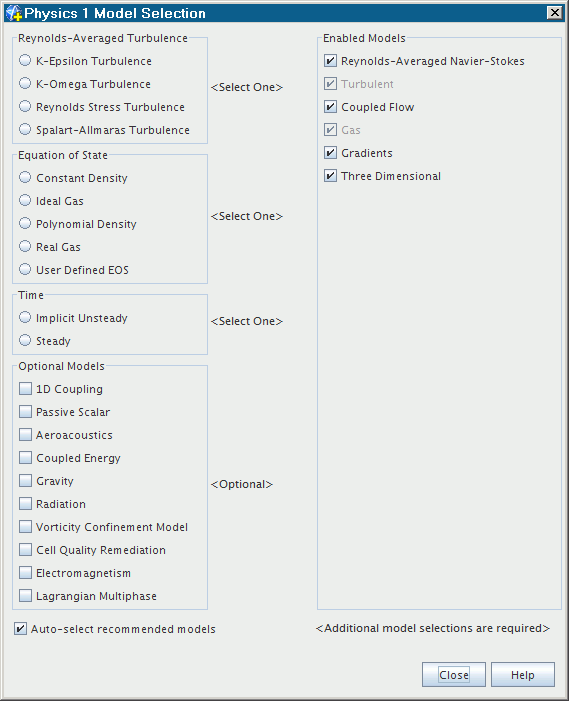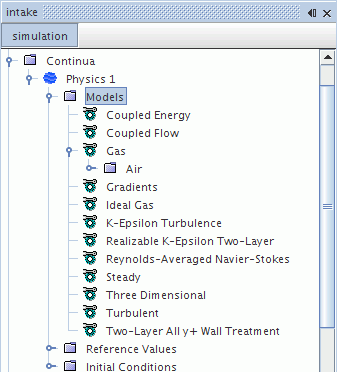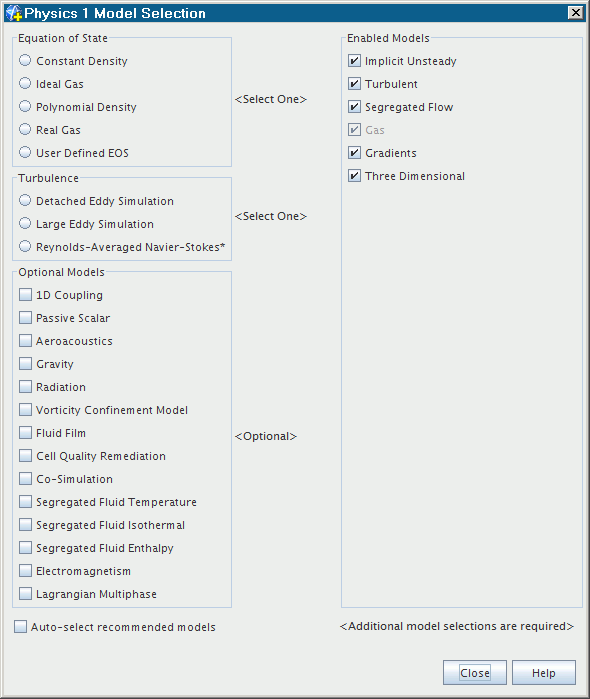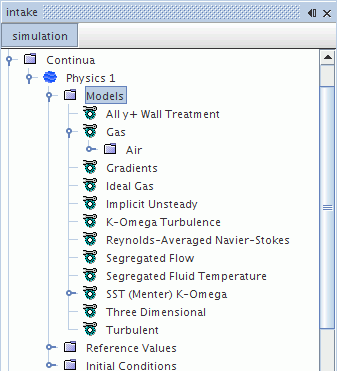Selecting a Turbulence Modeling Approach
Selecting the turbulence modeling approach is possible with or without auto-select.
Using Auto-Select
This section describes how to select a turbulence modeling approach using automatic selection of recommended models.
This is the default mode of selection, and is indicated by the Auto-select recommended physics models checkbox being ticked.
The selection of the Turbulent radio button in the Viscous Regime group box will automatically select turbulence models that provide closure of the Reynolds-Averaged Navier-Stokes (RANS) equations as a turbulence modeling approach. These modeling choices will be displayed in the Reynolds-Averaged Turbulence group box as shown below, although the choice of Enabled Models might differ.

While the end result will depend on the choice made above, a complete selection will be made, including the variant of the model and the wall treatment model. The result for the K-Epsilon model is shown below.

Without Using Auto-Select
This section describes how to select a turbulence model that supports DES without using the automatic selection of recommended models feature.
Use this selection method if large eddy simulation or detached eddy simulation is desired. Note too that these two turbulence modeling approaches are only available if the following prerequisite models are selected:
- the Three-Dimensional model;
- the Implicit Unsteady model;
- the Segregated Flow model.
To select the turbulence modeling approach, first select the viscous regime. In the Model Selection dialog, make sure that the Auto-select recommended physics models checkbox is cleared. Then, in the Turbulence group box, select the radio button corresponding to the appropriate turbulence method. The availability of methods depends partly on your selection of a time model.

Depending on your selection, you will now be able to select:
- a (RANS) turbulence model;
- a subgrid scale model for large eddy simulation (LES); or
- a turbulence model for detached eddy simulation.
The result for the SST K-Omega model is shown below.
